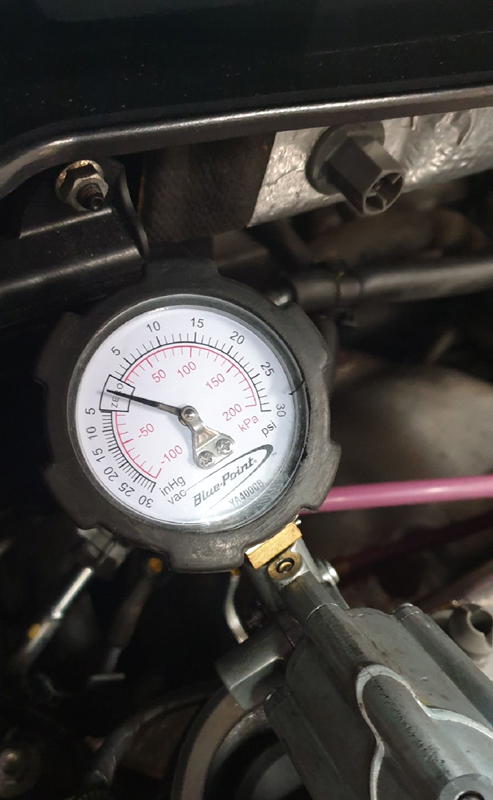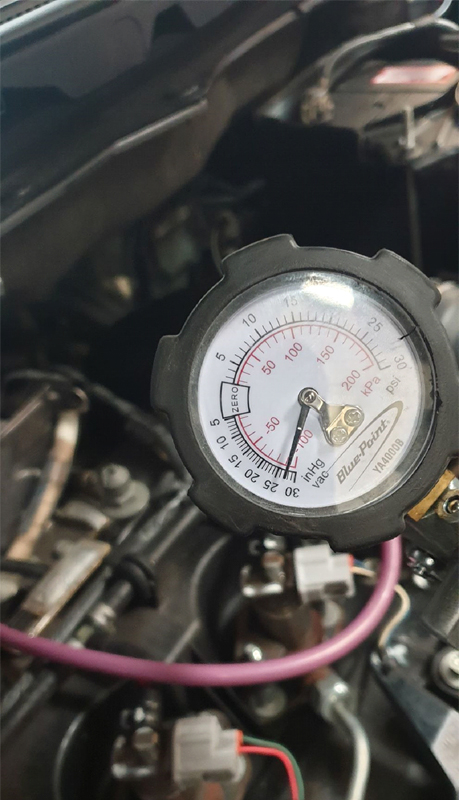
Darren Darling takes a look at a classic case of DPF faults going unchecked or being misdiagnosed, and explains how to do the job the DPF Doctor way.
Vehicle: Mazda CX-7 2.2 D
Issue: DPF blocked due to low boost pressure
This vehicle was presented to us with fault codes P2463 – DPF Soot Accumulation and P2459 – DPF Regeneration Frequency. No other fault codes were present. After discussing the history of the problem with the customer, we were informed the DPF had been clean two weeks previously but was now causing problems again. This appeared to be a classic case of treating the symptom not the cause. This unfortunately is something we see regularly, and it’s the reason why we always undertake our own assessment of the vehicle to identify the root cause of any DPF problems.
The DPF assessment
Taking a proper look, we did have a blocked DPF with pressures in excess of 150mb at idle. Considering that this DPF had been cleaned elsewhere only two weeks ago, we were most likely dealing with an issue that was causing the DPF to block quickly rather than the it being unable to regenerate (we’d already established that the driving conditions were good due to the customer’s commute to work).
So, let’s find out why. We quickly established that boost pressure was low, and so was mass air flow. We were mindful that such a high restriction in the DPF will affect these. We smoke tested the boost system to rule out any leaks. This passed the test. We consulted the customer, who authorised us to clean the DPF first so we could get a closer look at boost pressure and air flow without any excessive restriction in the exhaust.
We successfully cleaned the DPF using the JLM DPF Clean & Flush kit. We now had a healthy 4mb of pressure at idle; no fault codes or limp mode. Now we had got rid of the exhaust restriction, we could find the problem. We were working in reverse order on this vehicle as we’d usually be looking for the fault first before cleaning the DPF, but in this case it was the right approach.
We could see when monitoring MAF/EGR that we had an issue with the EGR valve failing to fully close. We addressed this first by stripping and cleaning the EGR. Happy with the EGR, we moved on to the boost issue. We started by testing the control side of things. For this the simple tools are the best! As you can see in below, we had no vacuum at the turbo, so we worked backwards. This was also the case supplying the boost control solenoid.


The Mazda uses a vacuum pump driven by the timing chain. This has two outputs – one feeding the brake servo, the other supplying the boost solenoid. We had healthy vacuum feeding the brake servo but very weak vacuum feeding the boost solenoid. On closer inspection, we saw that the outlet from the pump was partially blocked with carbon. We attached a pipe and used some JLM Air Intake & EGR Cleaner. This was left to soak for a few minutes. We used a small pic to ensure the pipe was clear.
Full vacuum and boost pressure was restored! We carried out an extended road test and were happy with what we saw.
This is another unfortunate example of faults being left unchecked or misdiagnosed, as we’ve had to address three issues here. Had we seen the car sooner, we would have been dealing with a sticking EGR valve or the vacuum issue.
We treated the car to a tin of JLM Diesel Extreme Clean as an aftercare product to help clean things up, and we’ll see the car in two weeks for a follow up assessment.
Job done!









